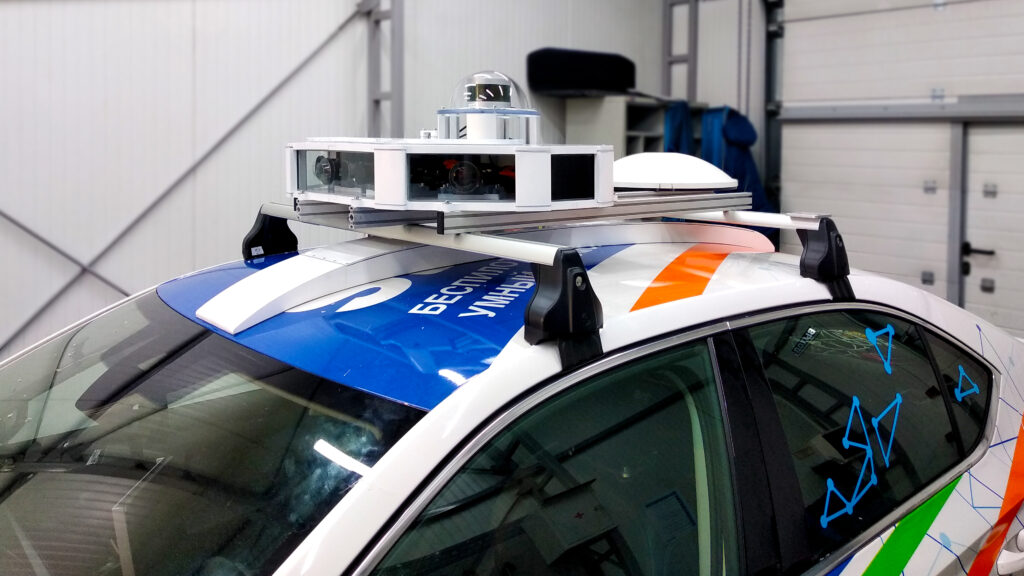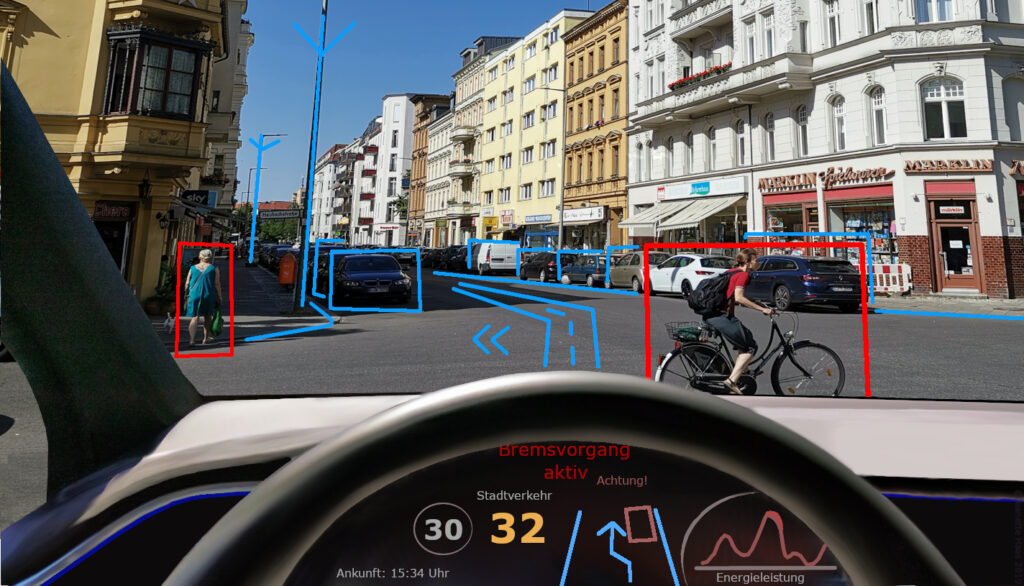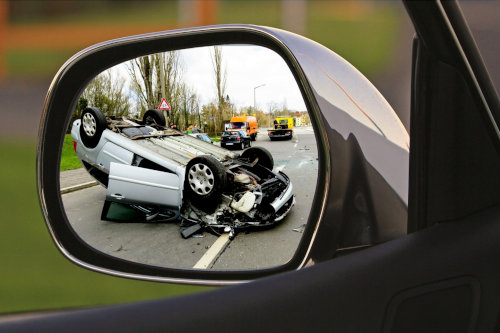In today’s rapidly changing world, we are standing at the doorstep of technology that can completely change the concept of travel—and that is Self-Driving Cars or self-driven vehicles. Once upon a time, what was seen in the films of fiction, that dream is now going to become a reality. These autonomous vehicles, with artificial intelligence, sensors, and sophisticated technologies, independently understand their surroundings, make decisions, and reach their destination safely. It is not just a mechanical innovation, but also a wonderful confluence of science and engineering, defining the future of Self-Driving Cars.
The science behind this technology is extremely complex and multi-layered. From the sensors around the car to the use of powerful computers, data analysis, and artificial intelligence—everything is an integral part of it. Understanding how these driverless vehicles work is an important aspect of modern technology. This article will simply explain the science behind Self-Driving Cars, so that each part of it is clear.

What are Self-Driving Cars and why are they important?
Self-Driving Cars are a type of vehicle that is able to control its path without human intervention and understand the surrounding environment. It is made up of various technologies such as sophisticated cameras, radar, LiDAR, and ultrasonic sensors. The main goal of these cars is to reduce accidents due to human mistakes, reduce traffic congestion, and make transportation safe and efficient. In many parts of the world, especially in urban areas where traffic is a major problem, Self-Driving Cars can reduce travel time and solve parking problems.
This technology is not limited to private cars; it can also bring about radical change in public transport, goods transport, and delivery services. For the elderly and those who are unable to drive, it will allow them to move freely. Its importance is immense from an environmental perspective; since AI-controlled cars move more efficiently, there is a possibility of reduced fuel consumption and carbon emissions. Understanding the science behind how these Self-Driving Cars work is essential.
The Science Behind Self-Driving Cars: The Main Components
A Self-Driving Car’s working method can be divided into several main components, demonstrating the science behind Self-Driving Cars:
- Perception:
Understanding the Environment
The most important task of a Self-Driving Car is to “see” and “understand” the surrounding environment accurately. This work is done through different types of sensors:
Camera: The car has multiple high-definition cameras, which capture images of road marks, traffic lights, other vehicles, pedestrians, and cyclists. These images are analyzed by AI algorithms, which identify objects and track their movements.
Radar: Radar sensors use radio waves to determine the distance, speed, and direction of other vehicles or objects. It can also work effectively in bad weather, such as fog or rain, which is difficult for cameras.
LiDAR: LiDAR sensors use laser pulses to create a three-dimensional map around the vehicle. This map provides highly accurate distance and size information, which helps the vehicle clearly recognize objects and determine their position.
Ultrasonic Sensors: These sensors work mainly at shorter distances, such as for parking or detecting nearby obstacles. They use sound waves to measure the distance of an object.
A complete and real-time image of the vehicle’s surroundings is created by combining the data from these sensors. This is called Sensor Fusion, a critical part of Self-Driving Cars.

- Localization: Knowing One’s Own Position
The car needs to know exactly where it is and where its destination is. This is achieved using High-Definition Maps (HD Maps) and GPS, essential for Self-Driving Cars.
High-Definition Map: These maps are much more detailed than ordinary GPS maps. They contain accurate information on each lane, street mark, location of traffic lights, footpaths, and other fixed objects. The car can determine its position on the map with millimeter precision by aligning its sensor data with this map.
GPS: Although GPS simply determines a general location, it helps to determine the overall course of the vehicle for Self-Driving Cars.
- Planning: Path and Decision-Making
After understanding the environment and knowing its own position, the next job of the vehicle is to plan where and how to go. AI algorithms play an important role in this step for Self-Driving Cars: Path Planning: The car chooses the safest and most effective path to reach the destination from its current location. It considers traffic, road conditions, construction work, and other obstacles. Behavior Planning: Decisions are made at this step on how the car reacts to other vehicles, such as when to change lanes, when to stop, or speed up. It tries to “behave” like human drivers, for example, passing another vehicle or showing patience in traffic jams.
Motion Control: In this step, the car controls its speed, acceleration, and braking to ensure a smooth and safe journey. - Actuation: Performing Work
According to the plan, the Self-Driving Cars actually implement them. In this step, the vehicle’s steering, brakes, and accelerator are automatically controlled. The AI system sends instructions directly to the vehicle control system, such as turning right, slowing down, or moving fast. This system is extremely accurate and capable of responding quickly.
Artificial Intelligence (AI) and Machine Learning’s Role in Self-Driving Cars
Artificial intelligence and machine learning work as the brain of Self-Driving Cars. By analyzing a large amount of data from the car’s sensors, it learns, makes decisions, and improves over time.
Deep Learning: It is a sub-branch of machine learning, which can recognize patterns like the human brain using neural networks. Deep learning models are used to recognize objects from pictures, understand voice commands, and analyze various road situations.
Computer Vision: This is an area of AI that helps the vehicle “see” and “understand” visual data from its cameras. For example, whether a traffic light is red or green, or which side of the road a pedestrian is going—all of these are identified through computer vision, crucial for Self-Driving Cars.
Self-Driving Cars: Challenges and Future Possibilities
Although the technology of Self-Driving Cars is rapidly developing, there are still several challenges:
Adverse Weather: Sensors cannot work accurately in situations like heavy rain, snow, or fog.
Unexpected Situations: Unexpected events on the street, such as the sudden arrival of an object or abnormal behavior of human beings, which are outside the training of the AI model, are difficult to deal with for Self-Driving Cars.
Legal and Ethical Aspects: There are legal complications regarding who will be responsible for an accident. Also, in some situations, AI may have to make moral decisions, which is a major challenge for Self-Driving Cars.

In the future, Self-Driving Cars are expected to be more advanced, safe, and prevalent everywhere. It will be possible to overcome these challenges through continuous development of technology, collecting more data, and strict examination. Self-driven cars will give a more safe, environmentally friendly, and comfortable future, revolutionizing our transportation system.
In conclusion, the science behind Self-Driving Cars is a remarkable combination of multi-dimensional and sophisticated technology. Collecting data from sensors, analysis by AI, and accurate functioning—each of these steps helps to automatically move a driverless vehicle. This technology is bringing a new possibility for mankind, which will completely reshape the next day’s transportation system.

Pingback: 10 Crazy Facts About Dreams Backed by Science -